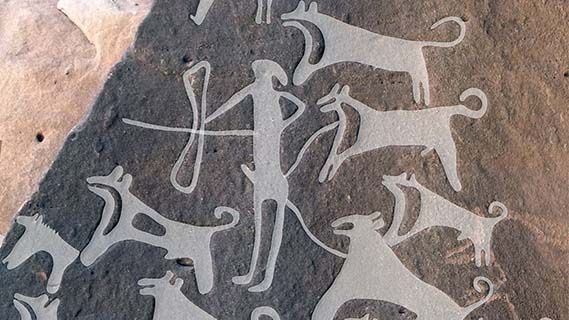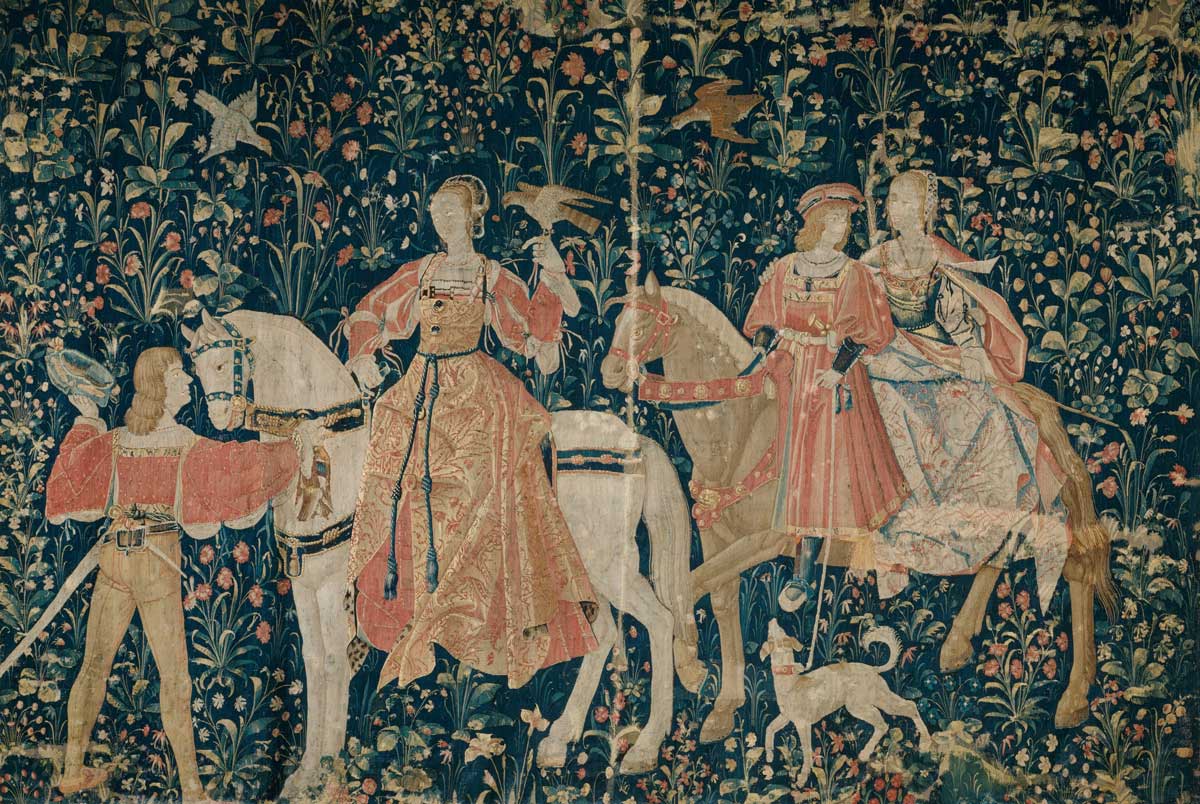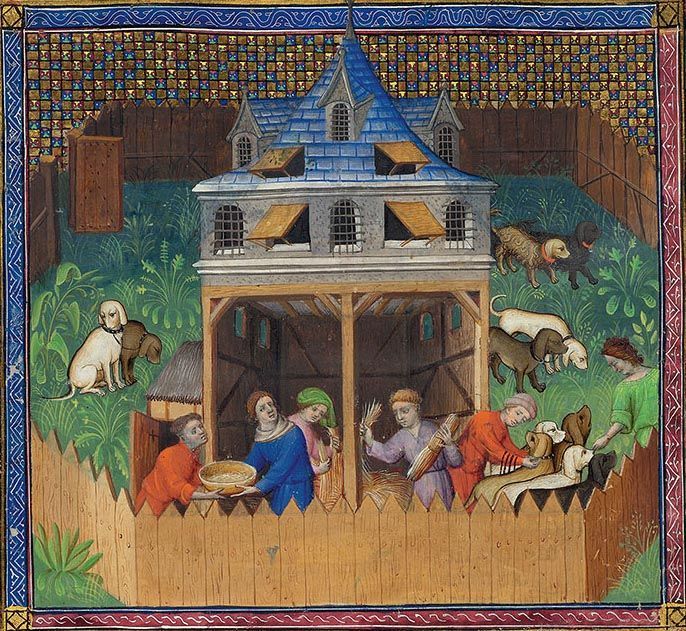Dogs: Their Cultural Significance
Dogs have been involved with humans for thousands of years. We know this because ancient races painted the images of their dogs onto the walls of caves: as long as 8,000 years ago.
In Northwestern Saudi Arabia, a hunter surrounded by a pack of dogs threads an arrow, props it up against the string of his bow, and pulls it back to kill a wild animal roaming nearby. He's flanked by other hunters readying their weapons. 2

This scene (above), and others like it, are engraved onto the cliffsides protruding from the dry, arid desert covering the northern region of present-day Saudi Arabia. A team of researchers think it may be the earliest depiction of dogs ever documented...2
The image above shows the engravings traced in white so that they are easier to see. What is amazing is that the dogs seem to have leashes and to be tethered to the humans which are engaged in a hunting scene. There are also pastoral scenes on the rock face showing sheep and cattle which is helping the dating, as pastoralism is believed to have been first practised on the Arabian Peninsula during the early half of the sixth millennium. 2
What is even more amazing is that scientists, through DNA research, believe that the domestication of dogs probably began about 40,000 years ago from a less aggressive population of wolves. At first, these dogs would have been like strays wandering around the perimeter of a settlement. 3
Eventually, over thousands of years, the dogs were tamed to stay with one family and to assist in daily living tasks like hunting, as the cave paintings above demonstrate.
Fast forward to the Egyptian civilisation which arose about 3100BC and lasted for about 30 centuries. The Egyptians revered many different animals including dogs as illustrated by this beautiful limestone statuette of Anubis from the EES excavations at Saqqara (Late Period c. 750-332 BC).

Clearly, the dog was an important part of Egyptian society and culture but the same was true of ancient Greece. The dog was companion, protector, and hunter for the Greeks and the spiked collar, so well-known today, was invented by the Greeks to protect the necks of their canine friends from wolves. Dogs appear in Greek literature early on in the figure of the three-headed dog Cerberus who guarded the gates of Hades.5
Below is a statue of Hades and Cerberus, his dog, which is on display at the Archaeological Museum of Crete.

The Romans in their turn also loved dogs.

This tile was found in The House of the Tragic Poet (Pompeii), and contains the Latin words cave canem which translate into beware of the dog, showing how the Romans used dogs to guard their homes. Often during the daytime, the doors of Roman houses were left open giving outsiders a view into the interior... This mosaic would have only been visible if the front door was open.6
Dogs continued as guardians and hunters, rather than pets, right up to the C16th. When we look at the art of the Middle Ages (C5th to C15th), dogs appear predominantly in hunting scenes though were pampered companions, as these images demonstrate.




Representations of dogs in art became more elaborate as individual breeds evolved and the relationships between human and canine developed....Dogs were depicted to symbolize guidance, protection, loyalty, fidelity, faithfulness, alertness, and love.8
As dogs became more domesticated, they were shown as companion animals, often painted sitting on a lady's lap or, in the example I have chosen: sitting on the artist's table!

Finally by the C18th we arrive at a time when dogs were recognised as an art work in their own right. The establishment of The Kennel Club in the UK and Ireland in 1873, and the American Kennel Club in 1884 encouraged the popularity of dog portraiture.8
The painting below Hounds in a Kennel by British painter William Trood (1860-1899) sold for US$212,500 in 2012!!

And just a couple more William Trood dog paintings to complete today's post.


I will return very soon with Remarkable Dogs.
Credits
- sciencemag.org
- nationalgeographic.com
- bbc.com
- egyptmanchester.wordpress.com
- ancient.eu
- mosaics.moatmtv.weebly.com
- historytoday.com
- en.wikipedia.org
- tate.org.uk
- bonhams.com
